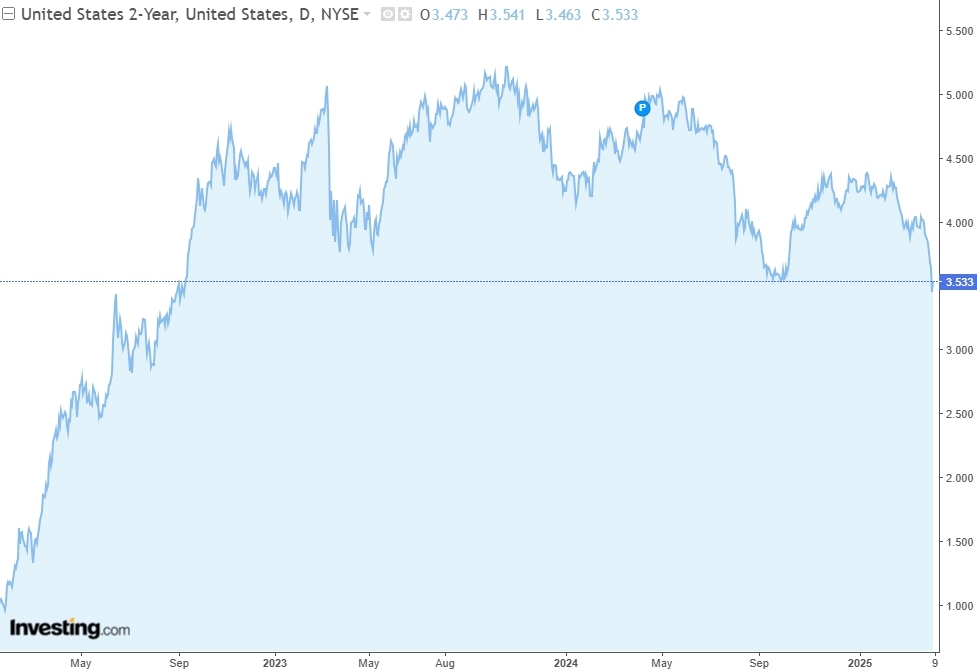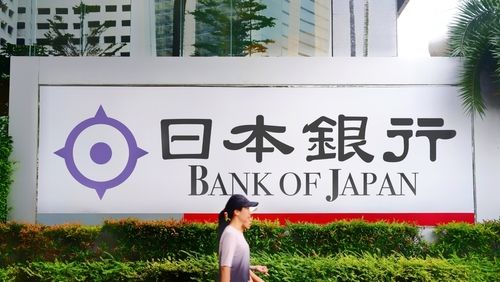Global "Black Monday," U.S. Bonds Shine: How Will the Fed Navigate Between Recession and Rising Inflation?

TradingKey - Donald Trump's newly announced reciprocal tariff plan has taken global markets by surprise, sending the Nasdaq Composite into a technical bear market. At the same time, gold, typically considered a safe-haven asset, has been pushed into the role of a "firefighter " amid the financial turmoil. In contrast, U.S. Treasury bonds have re-emerged as the preferred refuge for investors seeking stability.
Last week, the yield on the benchmark 10-year U.S. Treasury bond fell below the 4% threshold, hitting a low of 3.835% on April 6th—its lowest level since October 2024. The yield on the more policy-sensitive 2-year Treasury note plunged to 3.459%, marking its lowest point in over two years.
Trump’s steadfast refusal to adjust his tariff stance has amplified market fears that a repeat of the 1987 "Black Monday" may be looming. On the morning of April 7th, futures for U.S. equities, Asian stocks, crude oil, cryptocurrencies, and other key assets dropped sharply across the board, while U.S. Treasury yields continued to decline. As of this writing, the yield on the 2-year Treasury note had fallen by 3.73% to 3.533%.

[2-Year U.S. Treasury Yield, Source: Investing.com ]
Trump’s tariff policy has increased the appeal of U.S. Treasuries as a safe-haven asset, driven by concerns over its potential negative impact on the global economy. At the same time, mounting expectations of an economic recession have led traders to bet that the Federal Reserve will be forced to cut interest rates earlier and more frequently than previously anticipated.
One investment manager noted that markets are reacting strongly to the prospect of slower growth and demand destruction. TD Securities added that current market movements are being driven largely by expectations of a significant economic downturn.
Data indicates that traders are pricing in a greater than 50% probability of a 25-basis-point rate cut at the Fed’s May meeting, with as many as five rate cuts expected by the end of 2025. Earlier this year, only one cut had been forecast.
However, the expectation of multiple Fed rate cuts—or sustained gains in U.S. Treasury prices—may not unfold smoothly, as rising inflationary pressures could limit the central bank’s room to maneuver.
Analysts at AlphaSimplex Group warned that investors focused on slowing growth are overlooking Fed Chair Jerome Powell’s remarks on the inflationary risks posed by tariffs, which could ultimately prove problematic.
On April 4th, Chair Powell stated that Trump’s tariffs could continue to drive U.S. inflation higher in the coming quarters.. He emphasized the importance of closely monitoring the situation before deciding whether policy adjustments are warranted.
JPMorgan has warned that the Fed may be compelled to cut rates at its May meeting, while Morgan Stanley economists argue the central bank could instead prioritize the inflationary shock and avoid cutting rates this year altogether avoid cutting rates this year altogether.






